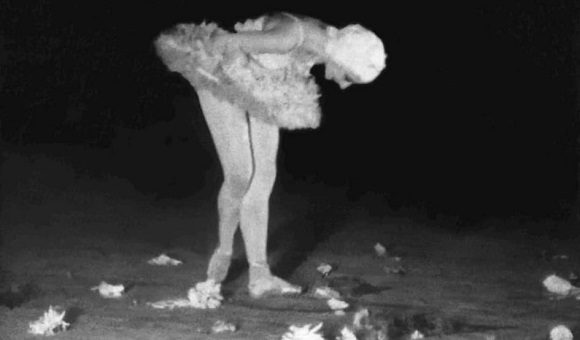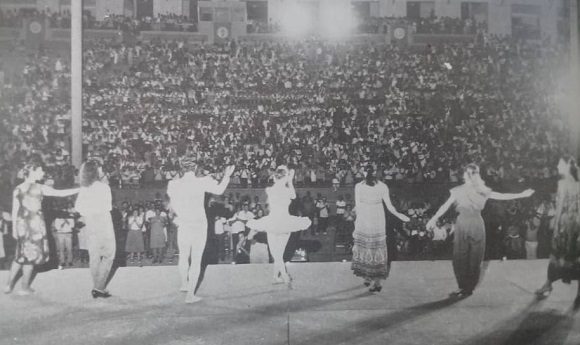On 15 September 1956, the stands of the University Stadium were full. Tens of thousands of members of the University Student Federation were there to apologize to the Ballet de Cuba for the government’s decision to withdraw the small but necessary subsidies that had been granted since 1950.
There, the student organisation supported the company led by Alicia Alonso. The event was a protest against the situation in the country, which has been ruled by Fulgencio Batista since the coup d’état in 1952.
Trade union leader Fructuoso Rodríguez participated in the event, risking his anonymity, and offered words of encouragement to the ballet and to Alicia Alonso.
Act of Reparation to Alicia and the Ballet, promotional flyer. Photo: Courtesy of Miguel Cabrera
This occasion also solidified the connection between the University Student Federation and the National Ballet. This connection had already been established through presentations funded by the organization itself. According to Miguel Cabrera, the historian of the National Ballet of Cuba, the support from Cuban ballet enthusiasts also played a significant role. Among them were Juan Nuiry, Alfredo Guevara, Raúl Amado Blanco, Raúl Roa Kourí, Harold Gramatges, María Luisa Rodríguez Colombié and Maruja Iglesias.
Alicia, who founded the dance organisation in the late 1940s, had only been awarded the National Order Carlos Manuel de Céspedes and the title of Lady in 1947. She came to Cuba after her time with the Ballet Theatre of New York, where she was a leading figure and created the first scholarship plan for children without economic resources, which made her social commitment clear.
«Art is universal, but the artist is not. I decided to return to Cuba because the artist has roots, and mine are here. I came because my country needed me,» the dancer would say some time later.

Alicia Alonso during the Act of Reparation to Alicia and the Ballet, held at the University Stadium on September 15, 1956. Photo: Courtesy of Miguel Cabrera
Around 1956, the newly created National Institute of Culture asked her to include the company in official events and other related activities. In a letter dated 16 August 1956 to the director of the Institute, Guillermo de Zéndegui, Alicia wrote
«Allow me, Dr Zéndegui, to reject this solution. Both Fernando Alonso, my husband, and I have not worked with the aim of receiving a certain amount of money each month, but with a broader horizon: that of carrying out a cultural work of a historical nature in the field of ballet (…) What you are proposing seems more like a handout or a bribe (…) we have faith in the Cuban people and we are sure that (…) they will give us their support so that they will never allow this artistic manifestation to be taken away from them».
The withdrawal of the subsidy was not long in coming. After the performance at the University Stadium, the National Ballet left Cuba. Those who attended remember the performance of The Death of the Swan and one of the most memorable ovations of Alicia’s career.
The artist exists because the world is not perfect, as the Russian filmmaker Andrei Tarkovsky once said. This presentation on 15 September provides us with elements that confirm this statement.
Translated by Luis E. Amador Dominguez


Deje un comentario